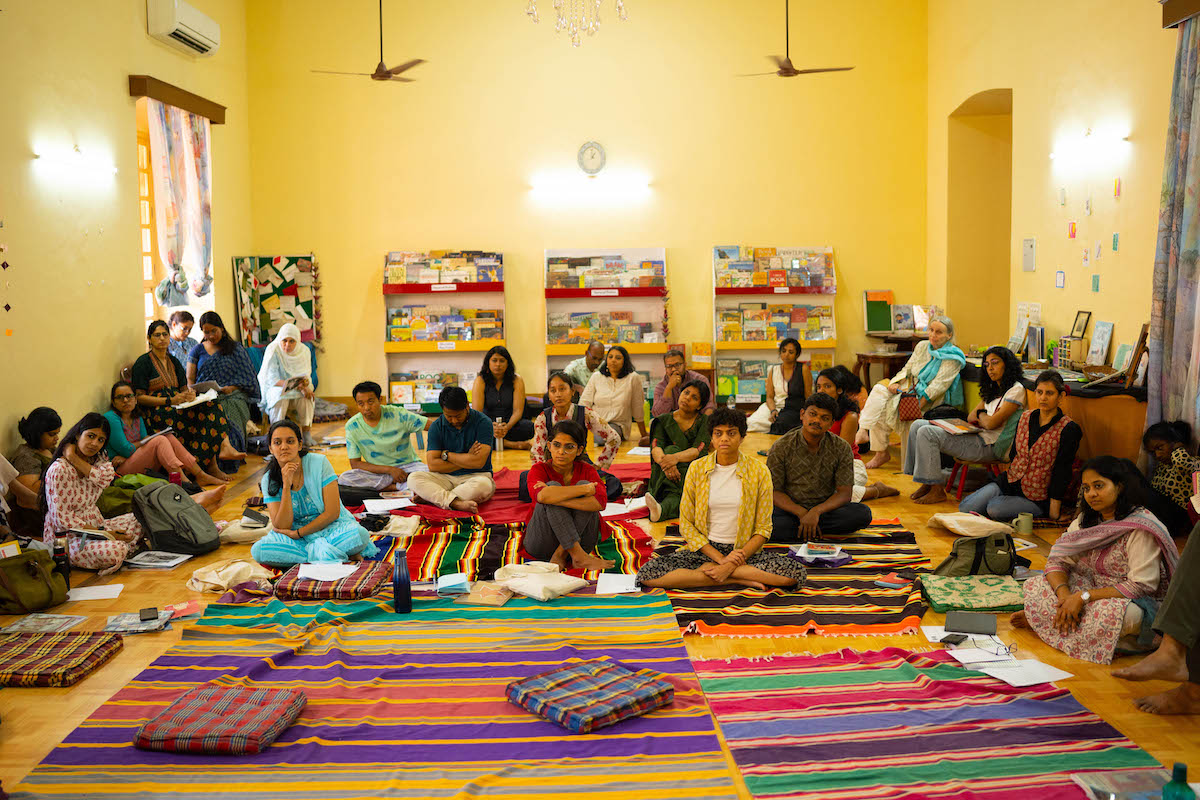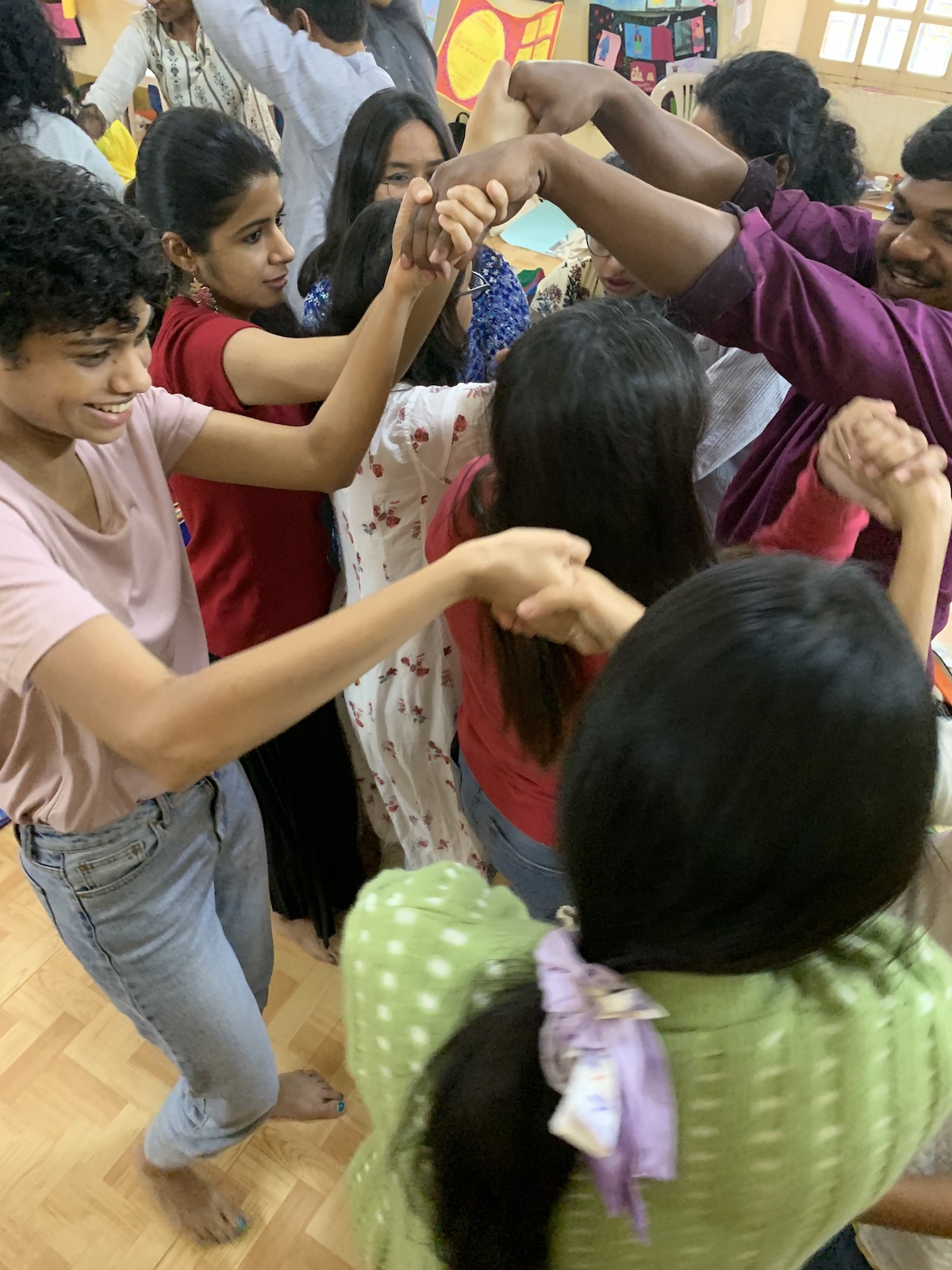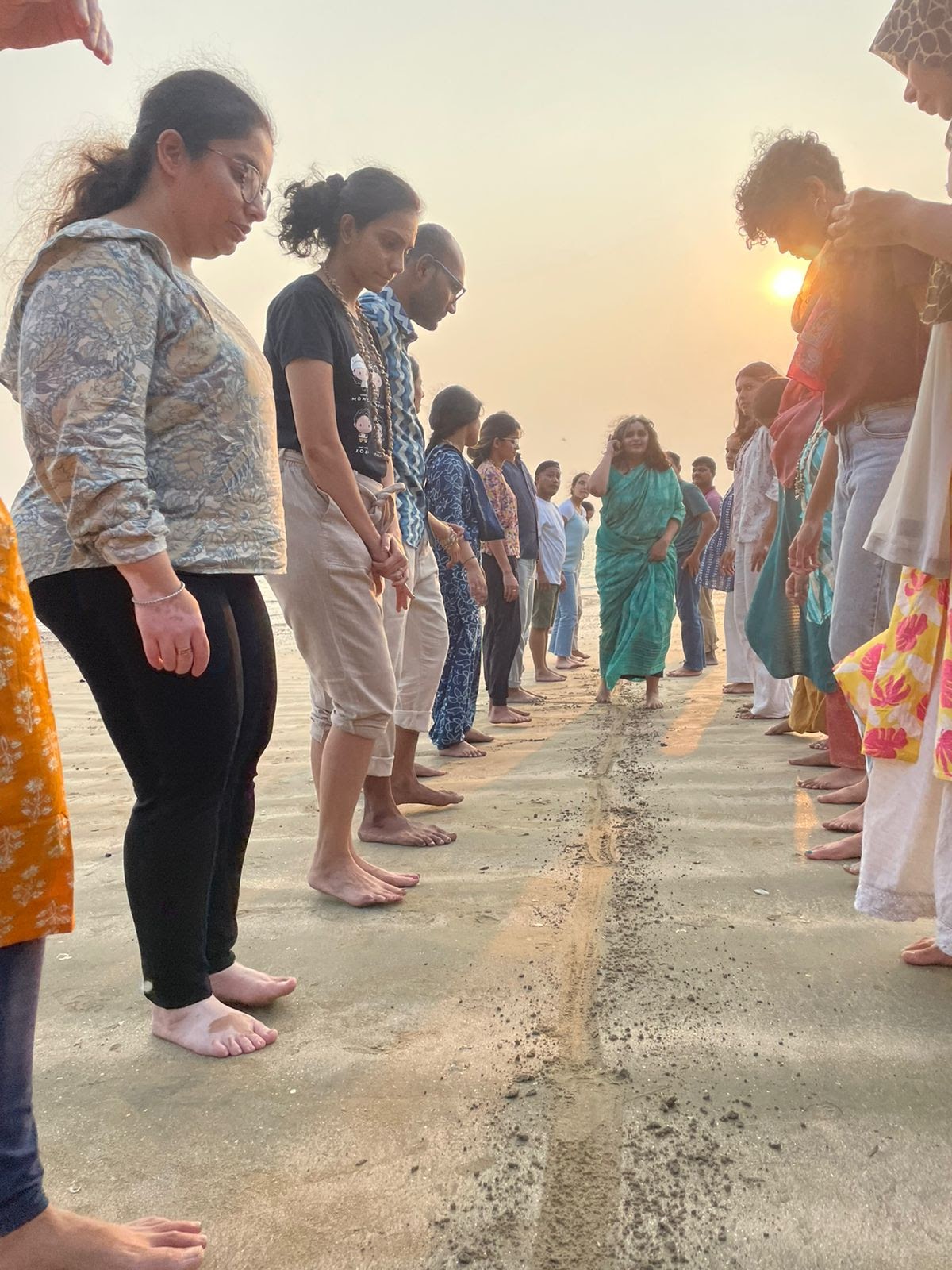Written by Nayanika P, LEC 2022
When I first joined LEC, I had some experience of working with children as a storyteller. I was often at loggerheads with the role, knowing there were parts of it I enjoyed and parts of it, like the performance bit, that I was deeply anxious about. The sessions I valued the most were taking stories with gender or caste to the kids and pondering over them together. These were conversations missing from my own childhood and I knew that there was a necessity for them. In one particular session with Class 6 at an all girl’s school, we were doing a story called ‘The Weightlifting Princess’ by Sowmya Rajendran. Most of the children expressed they didn’t like the story at all. They said a Princess should not look so muscular. They didn’t like that she never got married in the end. There were a lot of conversations we had after the story and I could see them think aloud about why they had certain beliefs and if it were their own. By the end of the session, some children who hadn’t spoken wanted to share how they aspired to be athletes themselves. From these sessions it became evident to me early on that the library space was a powerful one with a potential to bring about several voices to the forefront. There were so many moments in these sessions however where I realised I needed some guidance with how to navigate these texts for the children. When I came across the Library Educator’s course, it was with this rather single minded notion that I applied, to learn and equip myself as a facilitator.
But the past 7 months have been filled with so many unexpected learnings for me as a person and as an educator. From the very beginning in the first contact we were ushered into this mood of feverish excitement about libraries and books. I was rather lost at first only looking for what I can use in my sessions and what reading will better help me understand something. But Sujata and the faculty were so immersed in their roles as the torch bearers of wonderment, and the rest of the cohort so quick to jump into this bandwagon that it was impossible not to be swept away by it all. Amidst the papers we read and the numerous discussions we had about what a library was, we had several hours dedicated to just play and theatre. I found myself sprinting as fast as I could around a beach, pretending to be a tree hiding from Adani, pretending I was Clint Eastwood in a western shooting down my fellow librarians and doing so much more inexplicably fun things. There was a strange realisation at the end of it all. That I found myself coming home to someone I had long forgotten. And from the giggles I heard echoing around the library even after a fairly long day, maybe my cohort were not far from this feeling either. The contact periods reminded us how much more reading entailed rather than just sitting with a book. By engaging with texts by Freire and Von Stocker, my perspective on what ‘Reading’ entailed and meant broadened exponentially. That we ‘read’ with all our senses as children, but somehow the traditional library space caters to only reading words on a page. I began thinking about how we needed to let the stories into us, into our physical selves in a sense, and as an educator think about how a story can really reach a child.
During this period I was interning at Champaca bookstore in Bangalore as part of their library team. We held sessions twice a week in a school library with children coming from different walks of life. It was interesting working in both a private and school library and seeing how needs differed, where each one fit in the larger community of libraries. Now that I was tasked with bringing that wonder I felt into a library myself, I realised how much effort and planning went into it. Along with the team and with constant conversations with my mentor, I got busy with understanding my children and their needs.
There was one session with a Read aloud of ‘Stepping Stones’ a picture book by Margriet Ruurs, art by Nizar Ali Badr, about the Syrian refugee crisis for class 6. There were several responses and questions that arose. What was the war about? Why didn’t people have enough food to eat? Who were they fighting against? They thought the art was beautiful. Some were hoping they would make it safely across the border to a better home. Some thought the story was unrealistic because the family survived in the end. I was constantly thinking about ‘appropriate’ responses and worrying if the story made sense for them. While initially it felt like I was holding the sessions and the children were responding to me, somewhere along the way there came a feeling of a sense of co-ownership of the space; it became a discussion. One child approached me at the end and said she really hopes the family is able to return home someday, it’s not fair that they had to leave.
In between reading, we played games, there was fighting, crying, generally learning to deal with emotions and becoming kinder to each other all held in this space. While playing a game of Book Auctions, the children rushed to get Monopoly money, to make it all seem more authentic and fun. They taught me to hold a spirit of play always simmering, just below the surface, to fall back to at a moment’s notice. During a game of book charades, I soon found myself being an active participant rather than a facilitator and realising I could not keep up with how creatively they were charading! Gradually the way I approached my storytelling sessions changed as well. Where I once felt a kind of anxiety, I now allow myself to have fun with the story, to focus on what reaches the children and remember to not take myself very seriously.
Now after the course, I am filled with a number of ideas of what a library could be, constantly asking myself what my vision for an open and inclusive space is and what it would look like to make it happen. I am left with more questions than answers on most days but I am thankful for a community of people I can fall back on and constantly grow with.



